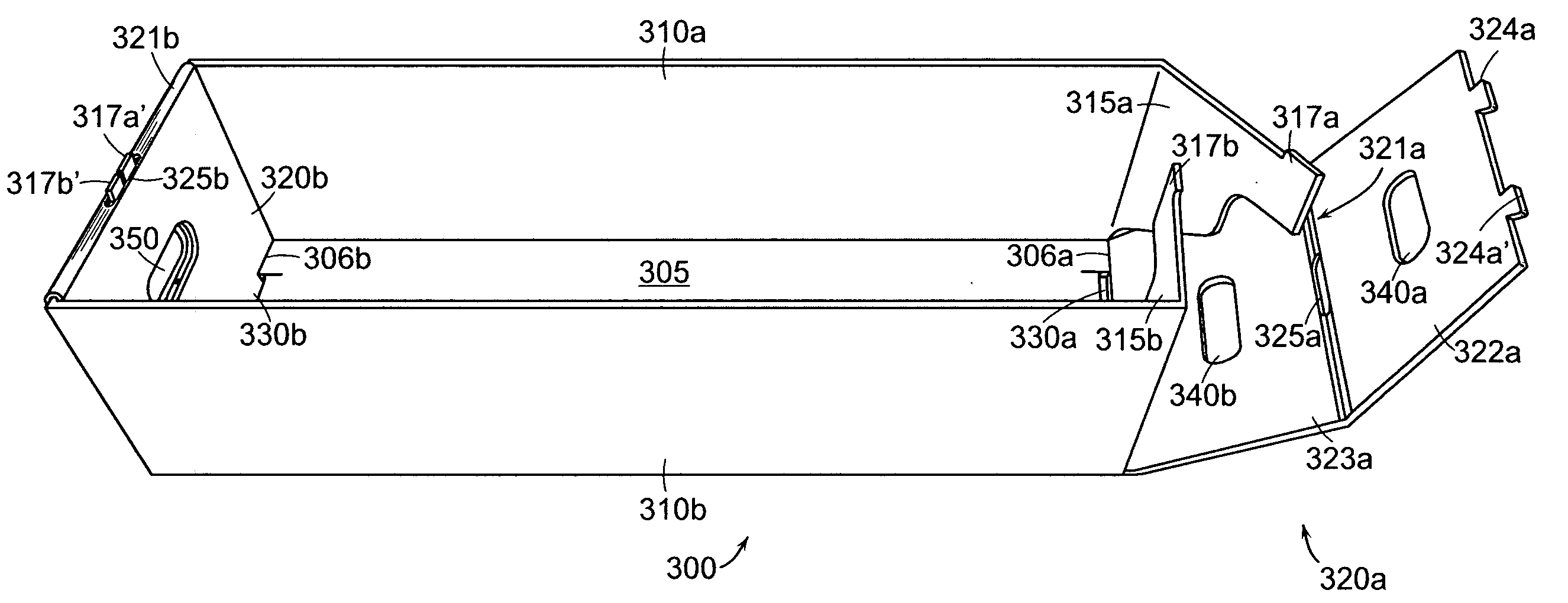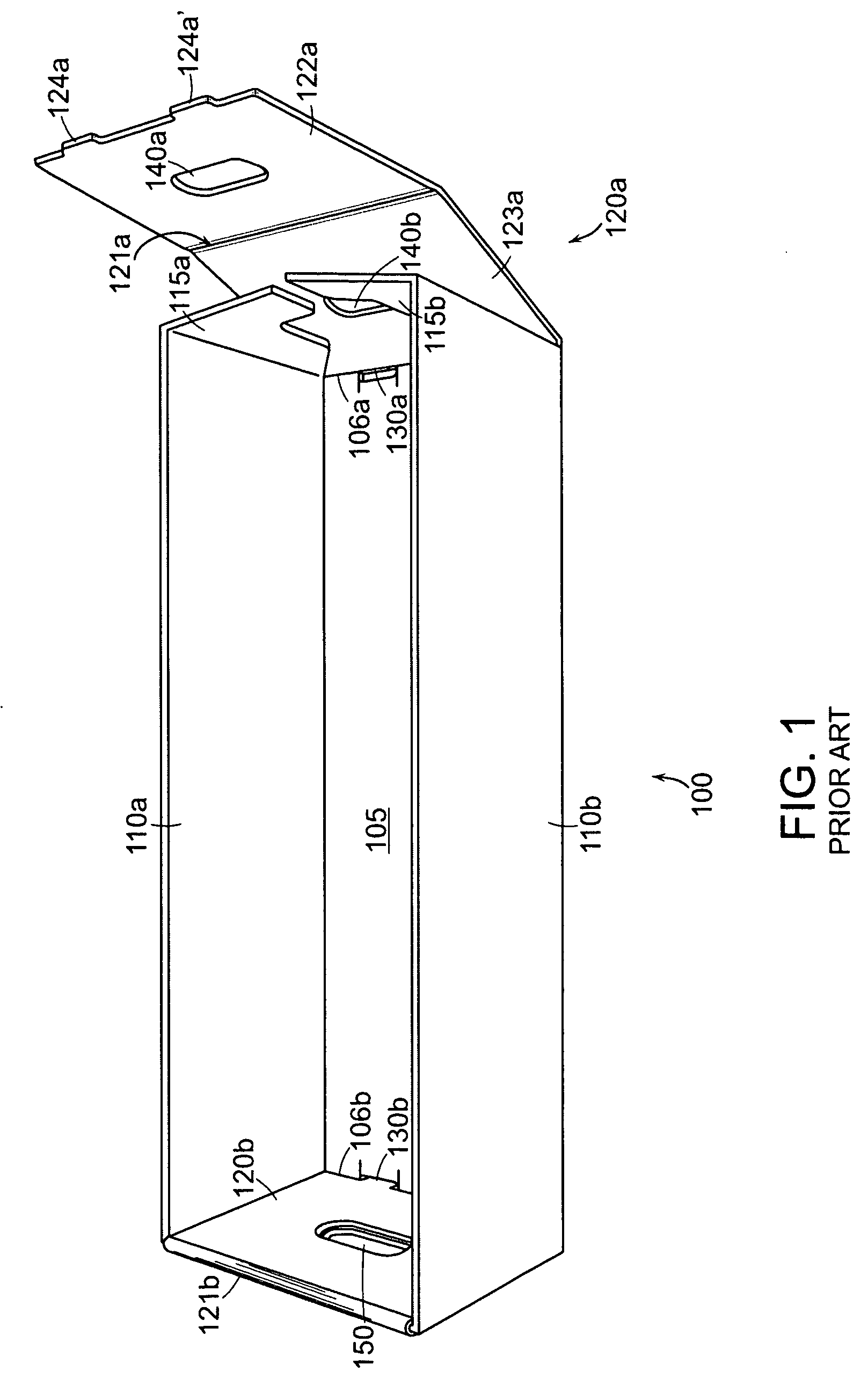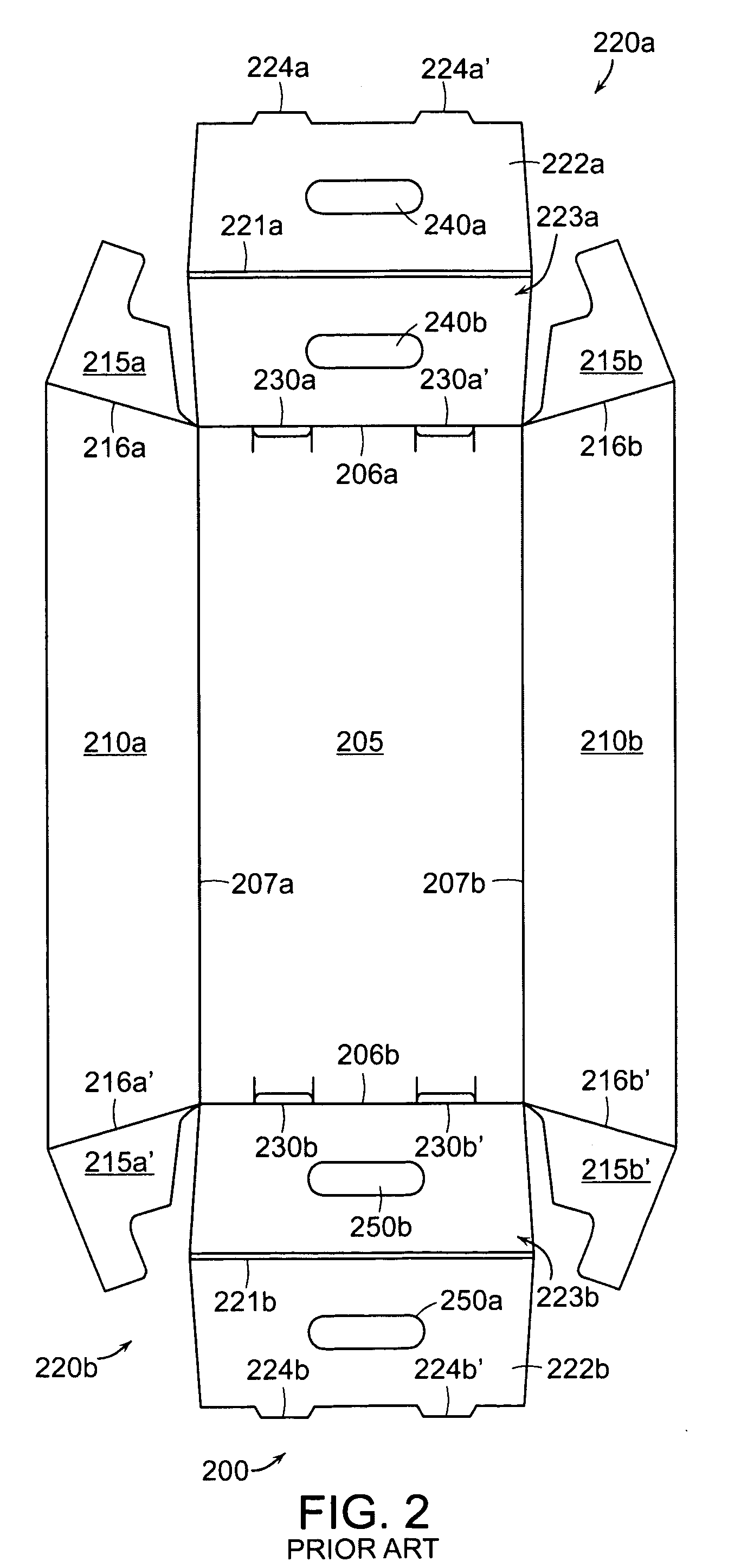Structures for securing containers
a technology for structures and containers, applied in the field of structures for securing containers, can solve the problems of large leakage from the system, difficult recycling, and high cost of replacement, and achieve the effects of cost-effective production or replacement, increased durability of containers, and recyclables
- Summary
- Abstract
- Description
- Claims
- Application Information
AI Technical Summary
Benefits of technology
Problems solved by technology
Method used
Image
Examples
Embodiment Construction
[0018]A description of example embodiments of the invention follows.
[0019]The present invention relates to structures for securing containers.
[0020]FIG. 1 is a perspective view of a corrugated paper letter tray that was previously used by the USPS. The assembled tray 100 has a bottom 105, two sides 110a and 110b, and two folded end elements 120a and 120b. One end element 120a is partially unfolded to show the structures it comprises. Each side has two end flaps folded therefrom. Only one end flap of each side is shown in FIG. 1 (end flap 115a folded from side 110a and end flap 115b folded from side 110b). Each end element folds from the bottom along a folding line (shown in FIG. 1 as 106a and 106b for end elements 120a and 120b, respectively) and has a pair of parallel transverse scores close to each other (each pair shown in FIG. 1 as 121a and 121b for end elements 120a and 120b, respectively) to define two leaves (shown in FIG. 1 as 122a and 123a for end element 120a) and permit o...
PUM
 Login to View More
Login to View More Abstract
Description
Claims
Application Information
 Login to View More
Login to View More - R&D
- Intellectual Property
- Life Sciences
- Materials
- Tech Scout
- Unparalleled Data Quality
- Higher Quality Content
- 60% Fewer Hallucinations
Browse by: Latest US Patents, China's latest patents, Technical Efficacy Thesaurus, Application Domain, Technology Topic, Popular Technical Reports.
© 2025 PatSnap. All rights reserved.Legal|Privacy policy|Modern Slavery Act Transparency Statement|Sitemap|About US| Contact US: help@patsnap.com



